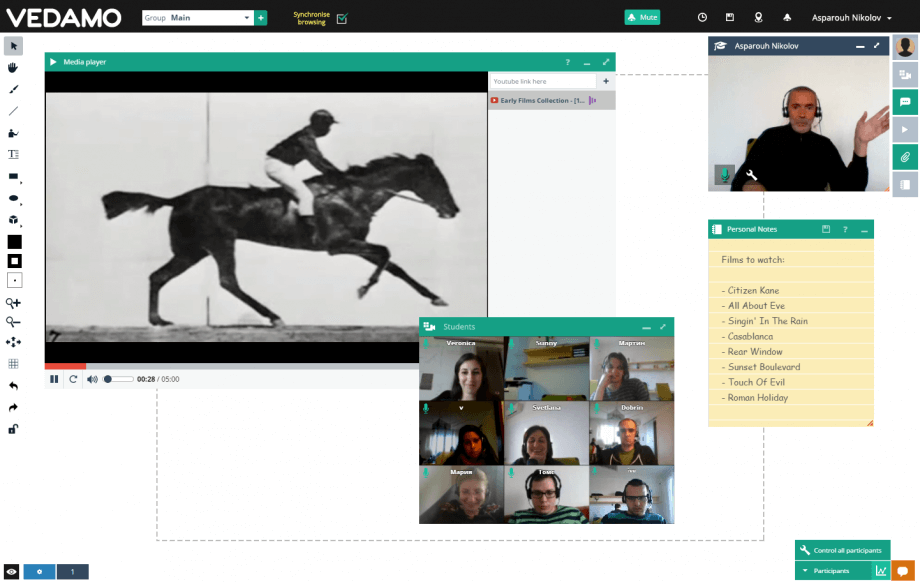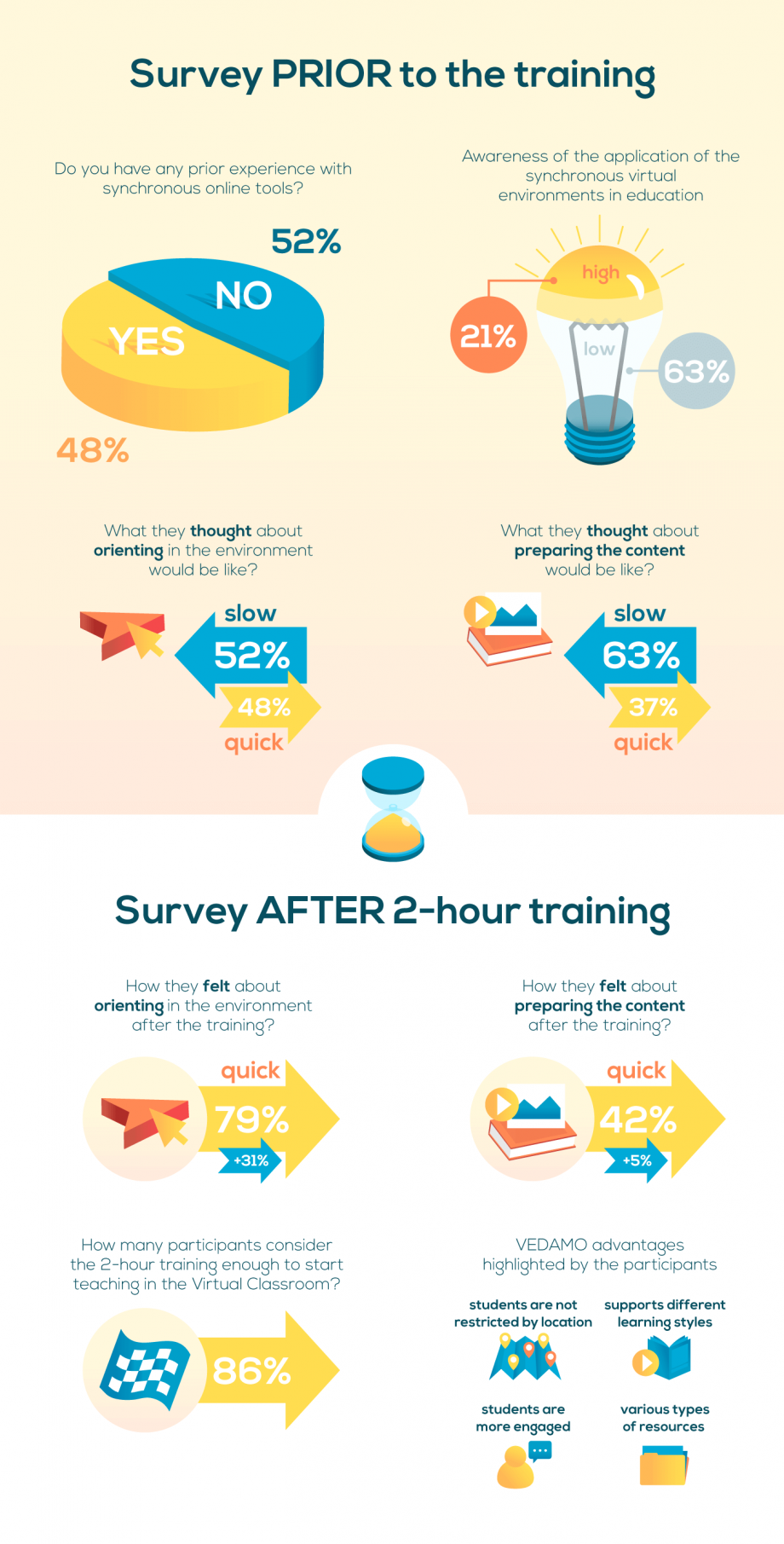Virtual classroom tutoring can be a challenge that teachers are not prepared for. This makes it difficult to implement the innovative solutions and interactive opportunities the learners need. We offer you the results from a survey with data before and after a 2-hour training we conducted to future teachers in a virtual classroom. You’ll get statistical proof of the advantages such tutoring can supply you with.
What is a synchronous virtual learning environment?
Synchronous virtual learning happens in real time in a shared online environment such as chat rooms, video-conferences, etc., where the teacher and the learners can communicate and collaborate directly with one another. Some of its key advantages include: a high degree of interactivity, easy adaptation to the learning space, and the aspect of socialization.
Virtual instructors (the tutors who deliver training in a virtual environment, when the instructor and learners are in separate locations) play the role of collaborative learning facilitators. Their ability to implement synchronous virtual teaching approaches is a key factor for effective classroom management.
What competences should virtual instructors have?
- To facilitate balanced interaction within the group
- To apply interactive teaching methods that promote the active participation of the learners
- To switch between collaborative and individual activities
- To select learning content relevant to the needs of the learners
- To provide a variety of media based on the different styles of learning, etc.
How did we conduct our study?
To explore the readiness of the future teachers for synchronous virtual instruction, we worked with 50 university students (who were in the 3rd year of their undergraduate studies) from the Faculty of Preschool and Primary School Pedagogy at the Sofia University.
First, they participated in a 2-hour training introducing the pedagogical and technological capabilities of VEDAMO’s Virtual Classroom. Then, they had to choose a topic, plan, and conduct a short online session in VEDAMO. The university students were divided into groups of 5-6 participants. While one of them was conducting their virtual session, the others were playing the role of pupils. This gave the participants the opportunity to experience the virtual instruction from both sides – as teachers and as learners.

Following the mock sessions, the future teachers filled out a survey about their confidence levels and preparedness to use synchronous virtual environments for educational purposes.
To what extent did the future teachers feel prepared for virtual classroom instruction?
During their mock virtual sessions, the participating university students demonstrated high levels of creativity and ability to engage their audience while implementing their virtual learning activities. The survey showed that the future teachers were able to quickly and intuitively grasp the use of VEDAMO’s Virtual Classroom; it also illustrated VEDAMO’s high potential for the realization of a variety of educational activities. After the practical experience with VEDAMO, we observed that the participants were motivated to work with synchronous virtual learning environments in the future.
Let’s see what the future teachers shared in the survey:

- 48% of the participants had had prior experience with synchronous online tools that they had used mostly for personal communication (52% had not had any prior experience).
- 21% reported a high to very high level of awareness regarding the application of the synchronous virtual environments in educational settings before participating in VEDAMO’s training. 63% reported only a low or very low level of awareness. This shows that although half of the participants had been using synchronous online tools in their everyday life, many of them did not have enough knowledge on how to use these environments for educational purposes.
- 86% reported that the 2-hour training was enough to start using the virtual classroom in an educational context (14% needed additional training).
- 58% shared that they felt confident to work in a synchronous virtual environment after the training (32% were confident but needed more practice, while 10% did not feel confident).
Prior to the training the participants had the following expectations:
- 32% thought that they would get quickly oriented in the environment, but that it would take them a long time to prepare the content
- 31% thought that it would take a long time to get both quickly oriented in the environment and to prepare the content
- 21% thought that it would take a long time to get oriented in the environment, but that they would quickly be able to prepare the learning content
- 16% thought that they would get both quickly oriented in the environment and be able to prepare the learning content
After the training:
- 79% of the participants reported that they were easily able to navigate in the environment
- 42% said that they were able to prepare the learning content quickly
The participants shared the following advantages of VEDAMO’s Virtual Classroom:
- Learners can participate in trainings regardless of their location, even from their own homes or other convenient places
- Learning can be much more interactive
- Synchronous virtual instruction supports different learning styles
- Learning can be easily individualized
- The teacher can use various types of resources much easier compared to the traditional classroom
- Learners feel more engaged and free to express their opinions
- Teamwork and collaborative learning are encouraged
- Students are more engaged
The participants found the following features of VEDAMO’s Virtual Classroom to be most useful when teaching pupils:
- 100% of the respondents – The tools for writing, drawing, and editing content on the online whiteboard
- 84% – The ability to share audio and video materials in the Media Player
- 79% – The teacher’s control tools for managing group interaction
- 78% – The option to present content on the whiteboard and use the pointer to focus the students’ attention
